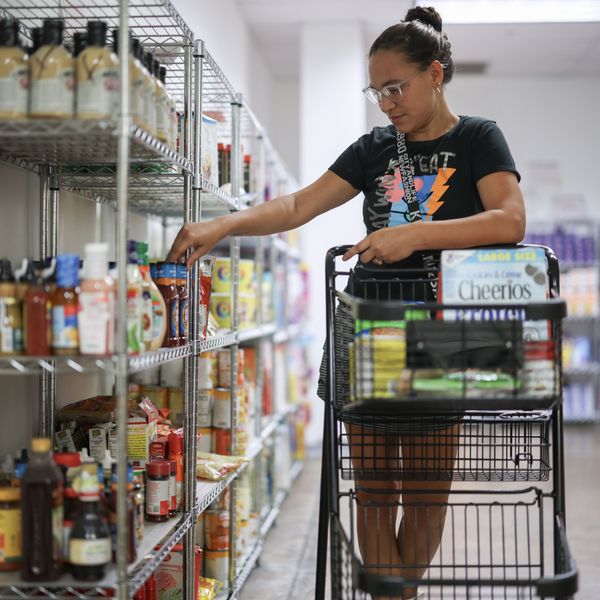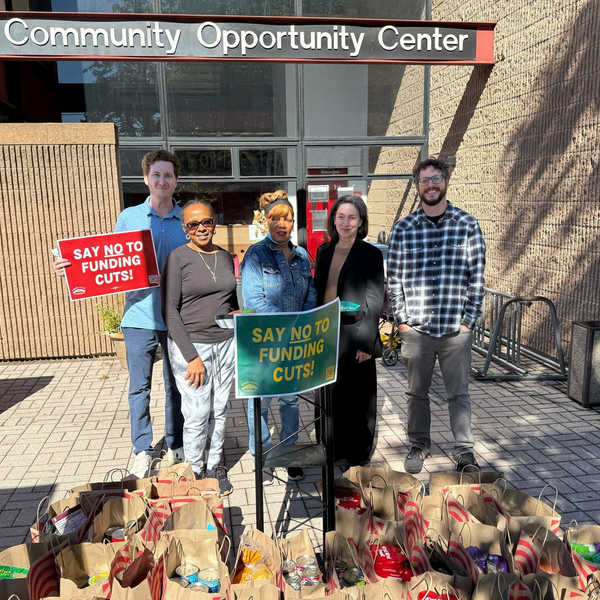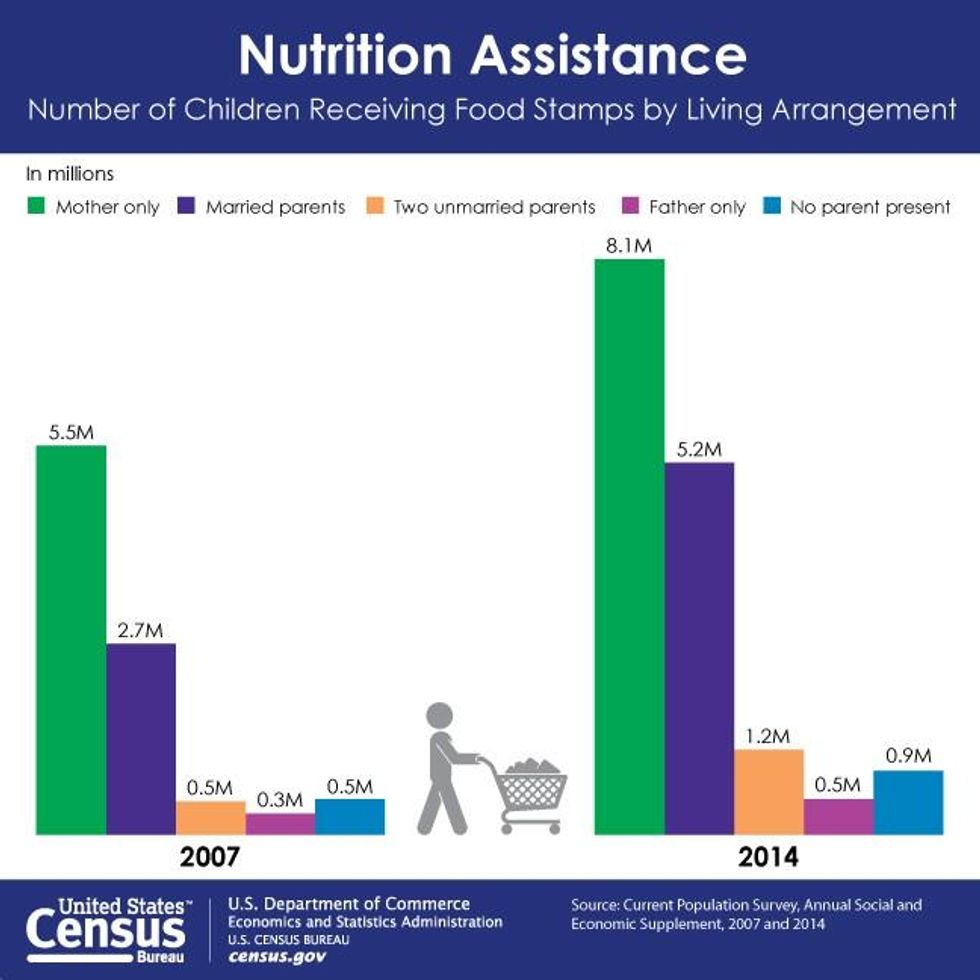One in five U.S. children relied on food assistance in 2014--a figure higher than before the recession--highlighting the uneven results of the so-called economic recovery, new information from the U.S. Census Bureau reveals.
That total is up from one in eight in 2007, according to data released Wednesday. While single-parent families with only a mother present who received food stamps jumped the highest--up 8.1 million from 5.5. million in 2007--figures increased across the board.
Married-parent families in need of assistance went up to 5.2 million from 2.7 million, while those with two unmarried parents jumped to 1.2 million from .5 million.
The news comes shortly after President Barack Obama heralded economic progress and increased job figures as a sign of the country's emergence from the 2008 recession in his State of the Union address earlier this month.
The data supplements other recent reports that point to a one-sided recovery, as more low-income families slip into poverty under a growing wealth gap.
As the Southern Education Foundation revealed in January, more than half of students enrolled in U.S. public schools live in poverty; that report also analyzed Census data in its findings. Another study by the National Center on Family Homelessness discovered that roughly 2.5 million children were homeless in 2013, an eight percent increase from the previous year. And the National Center for Children in Poverty (NCCP) reported last week that four in ten kids live in low-income families.
"Far too many American children live in economically insecure families, and this serious threat to our nation's future does not get the attention it deserves," said NCCP director Renee Wilson-Simmons.
The U.S., meanwhile, remains the only Western country to not have ratified the United Nations Convention on the Rights of the Child.
Political observers noted the conspicuous absence of food insecurity as an issue in the midterm elections, which came the same year that Congress cut $8.6 billion from the federal food stamp program in exchange for increased subsidies to farmers with large properties.
An additional $6 billion is expected to be cut from the program over the next two years.


